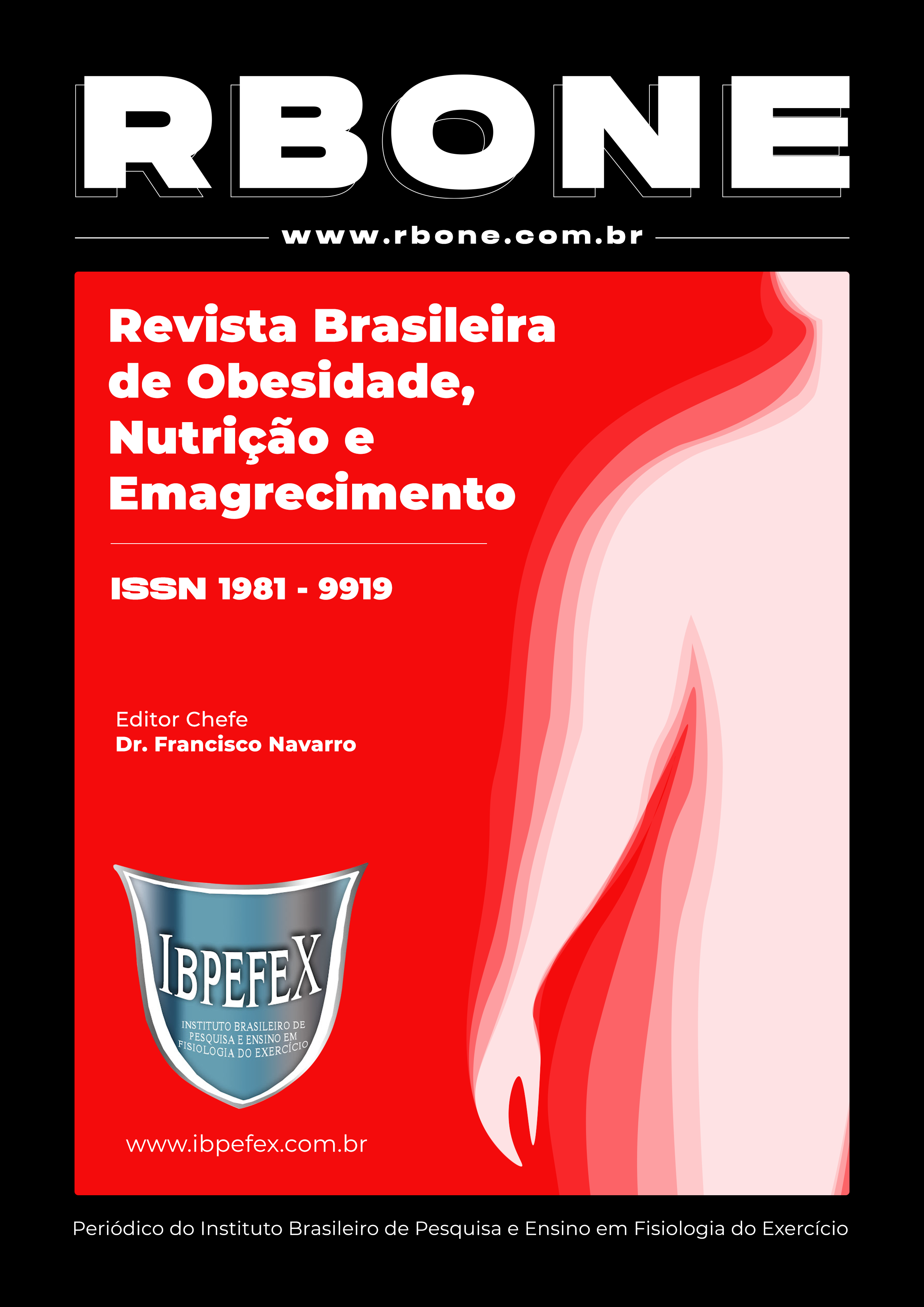Preparation of a guideline booklet for young people on intuitive eating
Abstract
The educational material seeks to help and guide young people, in a clear, objective and scientifically based way, to review the diets and rules imposed by society through clarification on Intuitive Eating and how it can help maintain a healthy relationship with food. The elaboration of the material took place in three stages: construction of the educational booklet, analysis and validation of the educational material by the counselor, also analysis and validation by a nutritionist specialized in humanized nutritional care, using a questionnaire adapted from the Suitability Assessment of Materials (SAM), (Sousaet al., 2015). The criteria adopted for the choice of a nutrition professional to help in the validation process of the booklet was based on her knowledge about behavioral nutrition and experience with the intuitive eating approach. The choice of the theme came from discussions about how nutrition today is very focused on what can and cannot be consumed and the search for the "perfect" body, according to the aesthetic standards imposed by world society. One of the aspects pointed out by the specialist was the proximity with the reader, the use of positive language that addresses them. Another point was the inadequacy of the size of the texts and the use of language, since it would not be suitable for the target audience. The booklet is a relevant and innovative material in teaching about healthy eating, considering the physiological, emotional, and cultural aspects, promoting health and quality of life.
References
-Alvarenga, M.; e colaboradores Nutrição Comportamental. 2ª edição. Manole. 2019. p. 1-549.
-Brasil. Ministério da Saúde. Alimentação saudável. Biblioteca Virtual em Saúde. 2010. Disponível em: https://bvsms.saude.gov.br/alimentacao-saudavel/ Acesso em: 23/05/2022.
-Deram, S. O peso das dietas. Rio de Janeiro. GMT Editores. 2018. 256 p.
-Donini, A. B. Alimentação intuitiva na Atenção Primária: prática do nutricionista e percepção do usuário. Revista de Aps. Vol. 22. Núm. 4. p. 746-766. 2021.
-Echer, I. C. The development of handbooks of health care guidelines. Revista latino-americana de enfermagem. Vol. 13. Núm. 5. p. 754-757. 2005.
-Gloria, N.F.; Carvalho, M.C.; Seixas, C.M.; Barcellos, D.M. Nutricionismo, postagens e celebridades: o que o oráculo nos diz para comer?. Revista Eletrônica de Comunicação, Informação e Inovação em Saúde. Vol. 15. Núm. 3. 2021.
-Montani, J.-P.; Schutz, Y.; Dulloo, A. G. Dieting and weight cycling as risk factors for cardiometabolic diseases: who is really at risk?. Obesity Reviews. Vol. 16. p. 7-18. 2015.
-Neumark-Sztainer, D.; Wall, M.; Guo, J.; Story, M.; Haines, J.; Eisenberg, M. Obesity, Disordered Eating, and Eating Disorders in a Longitudinal Study of Adolescents: how do dieters fare 5 years later?. Journal Of The American Dietetic Association. Vol. 106. Núm. 4. p. 559-568. 2006.
-Penaforte, F. R.; Matta, N. C.; Japur, C. C. Associação entre estresse e comportamento alimentar em estudantes universitários. Demetra: Alimentação, Nutrição & Saúde. Vol. 11. Núm. 1. p. 1-25. 2016.
-Rossi, A.; Moreira, E. A. M.; Rauen, M. S. Determinantes do comportamento alimentar: uma revisão com enfoque na família. Revista de Nutrição. Vol. 21. Núm. 6. p. 739-748. 2008.
-Saarni, S.; Rissanen, A.; Sarna, S.; Koskenvuo, M.; Kaprio, J. Weight cycling of athletes and subsequent weight gain in middleage. International Journal of Obesity. Vol. 30. Núm. 11. p. 1639-1644. 2006.
-Scrinis, G. Nutricionismo: a ciência e a política do aconselhamento nutricional. Editora Elefante. 2021.
-Sousa, C. S.; Turrini, R. N. T.; Poveda, V. B. Tradução e adaptação do instrumento suitability assessment of materials (SAM) para o português. Revista de Enfermagem UFPE on line. Vol. 9. Núm. 5. p. 7854-7861. 2015.
-Tribole, E.; Resch, E. Comer Intuitivo. Rio de Janeiro. GMT Editores. 2021. 448 p.
Copyright (c) 2023 Hellen Elias Viveiros de Ávila, Henrique Eduardo Hass, Laís Sabrine de Oliveira

This work is licensed under a Creative Commons Attribution-NonCommercial 4.0 International License.
Authors who publish in this journal agree to the following terms:
- Authors retain the copyright and grant the journal the right of first publication, with work simultaneously licensed under the Creative Commons Attribution License BY-NC which allows the sharing of the work with acknowledgment of the authorship of the work and initial publication in this journal.
- Authors are authorized to enter into additional contracts separately for non-exclusive distribution of the version of the work published in this journal (eg, publishing in institutional repository or book chapter), with acknowledgment of authorship and initial publication in this journal.
- Authors are allowed and encouraged to post and distribute their work online (eg, in institutional repositories or on their personal page) at any point before or during the editorial process, as this can bring about productive change as well as increase impact and impact. citation of published work (See The Effect of Free Access).






